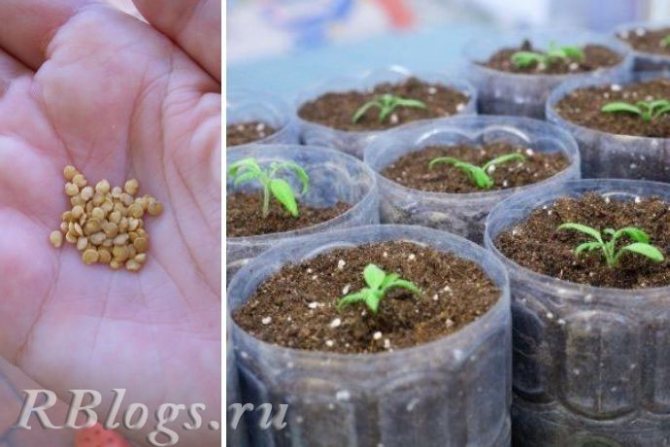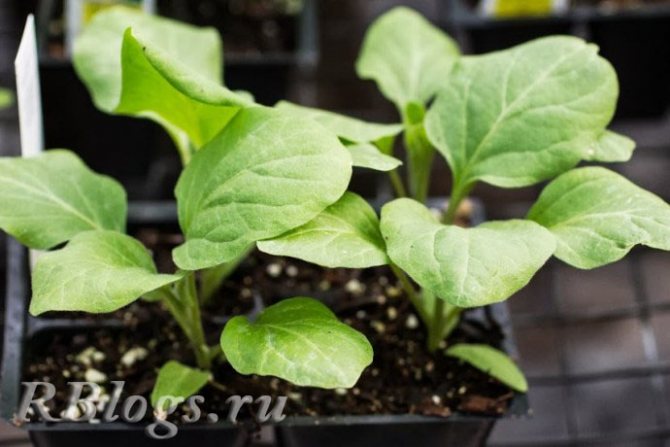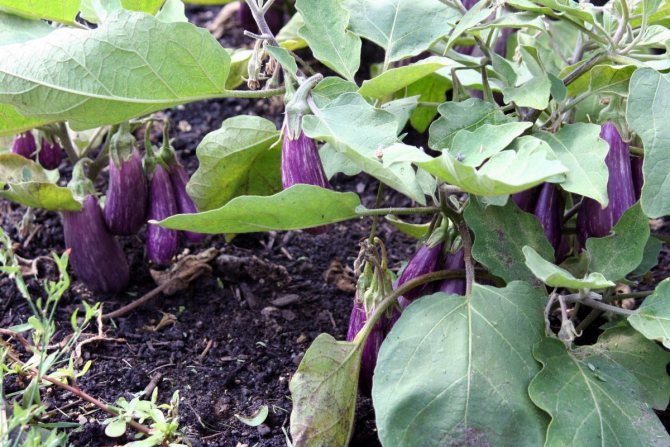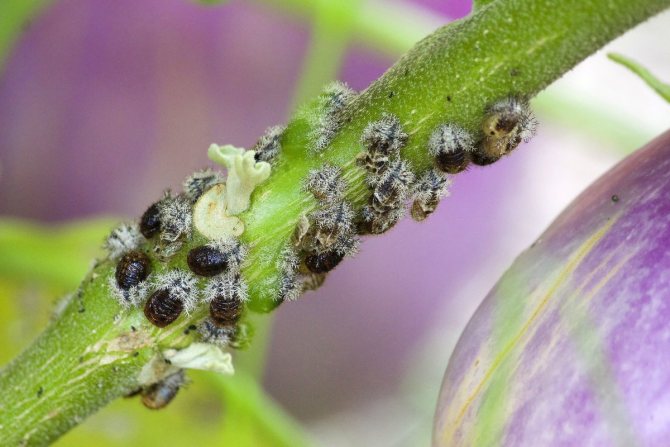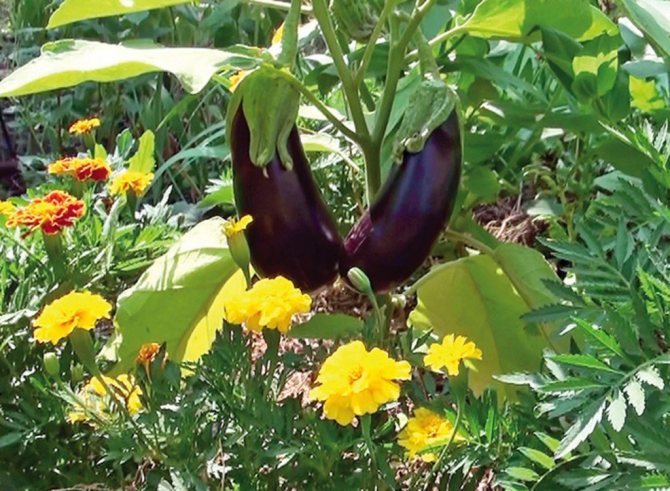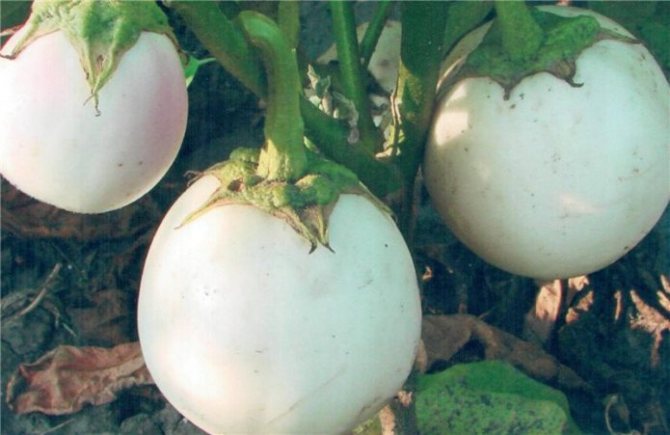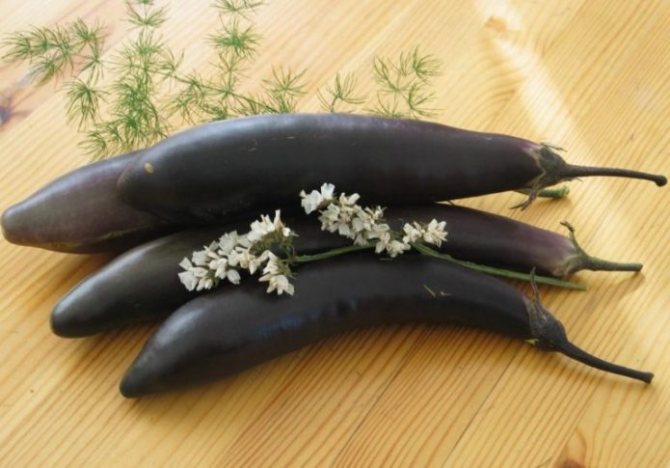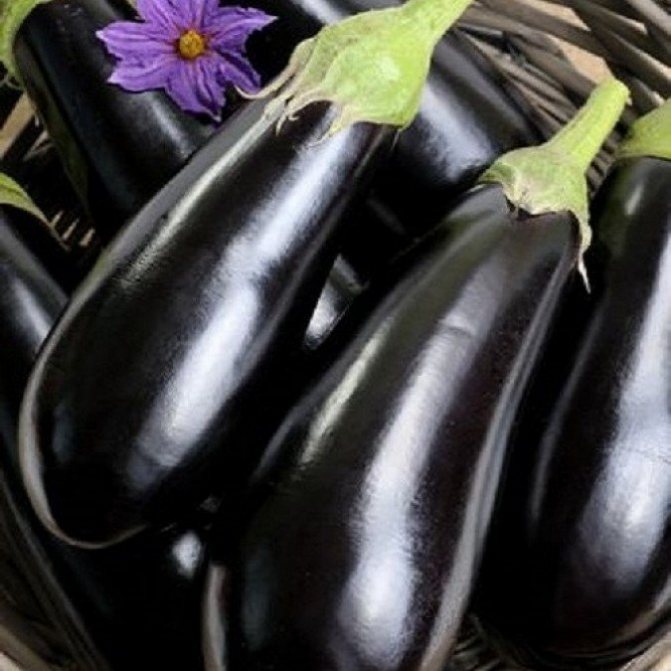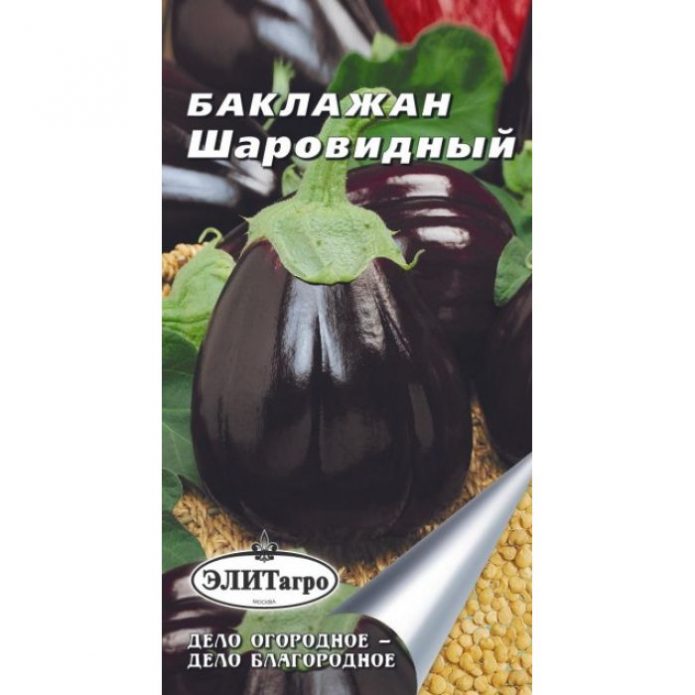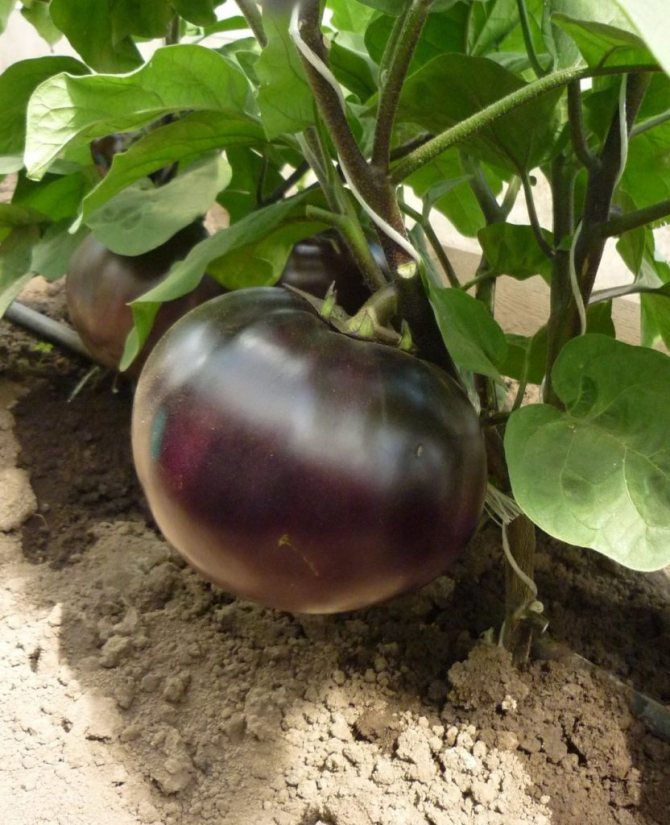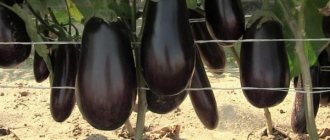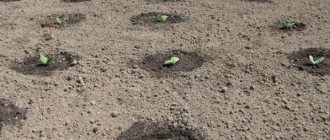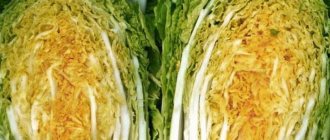The handsome eggplant is a welcome guest on our table, but not all gardeners manage to make friends with him. Indeed, the process of growing this southern crop in the open field and in not too warm climates is fraught with some difficulties. However, with the right choice of the variety, as well as observing a number of important rules and conditions, you can get a good harvest of strong, tasty fruits.
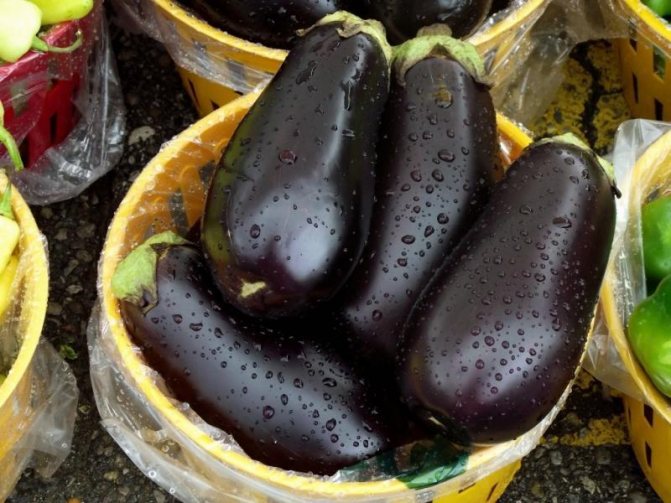
Growing eggplants
Choosing the right place
In the place where it is planned to plant eggplants, predecessors from the Solanaceae family should not grow earlier. Such plants can grow back in the same place only after 3-4 years. Preference should be given to the beds on which they were grown in the previous year:
- cucumbers;
- cabbage;
- peas.
Note! You can sow and plant eggplants after beets, but the soil should be well fertilized and loosened.
First you need to carefully study what eggplants love. These are heat-loving and light-loving plants, therefore, you should choose exclusively the southern side for the formation of beds. This culture is afraid of the winds, so the designated area must be protected. For example with:
- garden plantings (tree line);
- buildings;
- artificial barrier (polycarbonate).
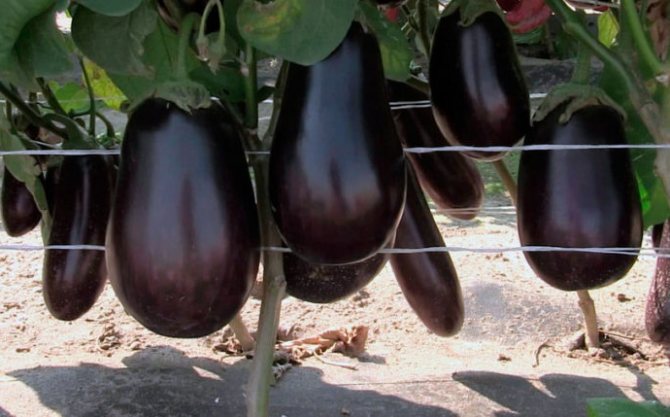

Eggplant in the vegetable garden
When to plant eggplants
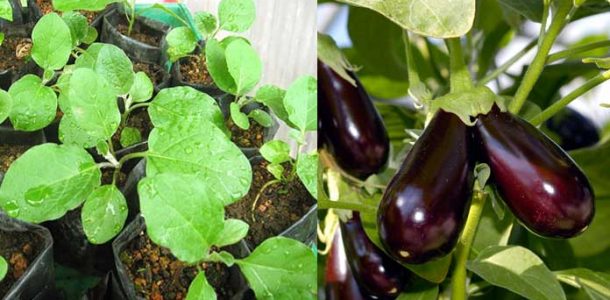

In our country, eggplants are grown in seedlings: first, strong seedlings are taken out, and then planted in open ground. This approach is necessary in order to protect young shoots from spring cold snaps and to shorten the vegetative period of plants. Experienced gardeners determine the date of planting eggplants for seedlings, focusing on the information indicated on the seed package. However, the rules common to all varieties can be distinguished:
- if it is planned to grow eggplants in the open field without additional shelter, then the seeds are planted in the second half of March, and the sprouts are "relocated" to the beds in mid-June.
- if the seedlings grow under temporary shelter for the first time, then the seeds can be sown at the end of February, and the seedlings can be transplanted into the soil at the end of May.
Eggplants should be planted in open ground when the weather is warm outside and there is no big threat of night frosts. But at the same time, it is very important not to overexpose the seedlings, because if the sprouts go into the budding period, they will much worse tolerate the "resettlement" to a new place, they can get sick and lose the ovaries.
How to plant a crop correctly
Eggplant is a very capricious culture. To get a good harvest, this vegetable must be germinated at home or in a greenhouse before planting in open ground.
Landing dates
Zucchini: growing and nursing outdoors
Before transplanting into open ground, seedlings need to be grown for 55-60 days. Sowing seeds in regions with a warm climate should be started from the first decade of March, and in the north - a month later. If the crop is intended for cultivation with artificial protection or a greenhouse, the seeds are planted in February.
Seed preparation
First you need to fill the seeds with water (preferably warm), after 5 minutes the remaining ones on top must be removed, since they are unsuitable for planting - the ability to germinate is lost. The rest are washed in water at a temperature of 50-52 degrees. After that, they should be kept in hot water for 30 minutes and in cold water for 3 minutes.After such a procedure, the seeds must be placed in a 1.5% solution of potassium permanganate for disinfection for 20 minutes, then rinsed with running water and dried.
Additional Information! You can harden the seeds by placing them in a refrigerator or a cool place with a temperature of 0 degrees for 2 days.
Without fail, after hardening and preventive actions, the planting material must be fed. To do this, the seeds are placed in warm water with top dressing, which you can prepare yourself. But this requires a clear calculation of the proportions so as not to oversaturate the material. It is best to use ready-made mixtures or fertilizers such as succinic acid, ivy or sodium humate.
The seeds are placed on a saucer or container, the bottom of which is covered with a damp natural cloth. All this is closed with a rag and placed in a warm place with a temperature of at least 25 C, if necessary, humidification with water is carried out. When seedlings appear, the seed is planted in a container.
Soil preparation
For planting, you can use ready-made soil mixtures that are sold in stores. And also soil from the garden, mixed with sand and fed with ash, urea or superphosphate, is suitable. The soil temperature should be at least 25 C. For disinfection, the soil is calcined in the oven for 45 minutes.
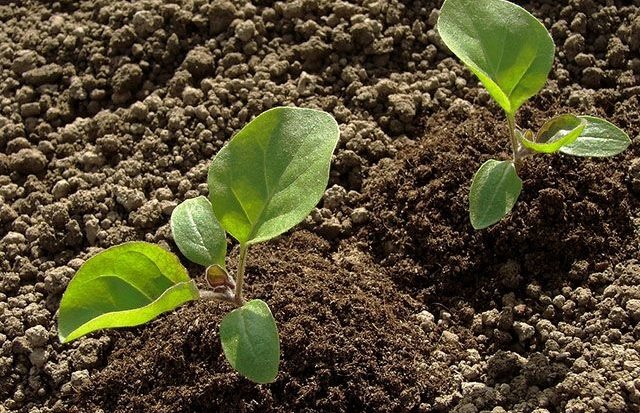

Soil preparation
Planting seeds
Drainage or sawdust is placed in boxes, cups or other containers, soil is on top. After that, it is moistened and a seed is stuck into each separate container to a depth of 1.5 cm.It should be remembered to remove excess moisture and air flow into the soil - for this you need to make holes at the bottom of the container. The distance between the seeds in the box should be at least 5 cm. If they are sown in cassettes, then one seed should be placed on each layer of the earth, sprinkling a half-centimeter layer of soil. For quick germination, the container is covered with foil until shoots appear. Any other covering material can be used.
Important! It must be remembered to maintain heat in the room, moisture of the substrate and protection from drafts of crops when they are ventilated.
We grow seedlings
The process of growing seedlings of "blue" practically does not differ from tomatoes and peppers.
Before planting, the seeds must be disinfected with a hot (+ 50 ° C) solution of potassium permanganate for 20-30 minutes, rinsed and germinated.
It is best to grow seedlings in peat pots (without further transplanting) or in plastic cassette containers. In such seedlings, the root system is not damaged during transplantation. The plant quickly takes root and begins to grow in a comfortable environment.
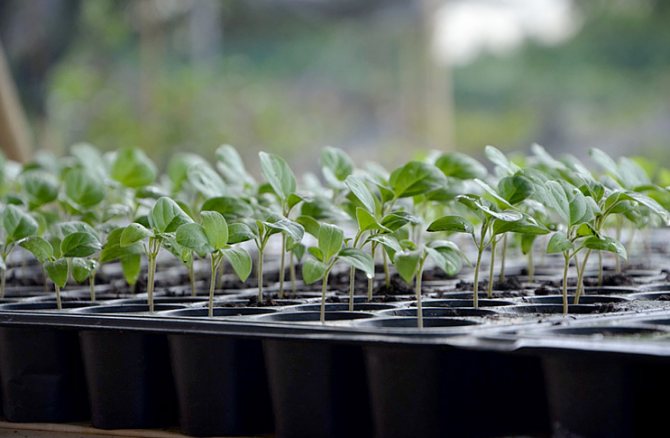

Soil for growing seedlings is prepared from sod garden soil, humus (compost) and sand in a ratio of 5: 3: 1. In order not to burn the young roots of seedlings, instead of chemical phosphorus-potassium fertilizers, it is preferable to add wood ash.
We maintain the temperature until the emergence of shoots + 25оС. In order for the seedlings to grow stronger, within 5 days, the seedling containers should be transferred to a cooler place (+ 16 ° during the day and + 13 ° at night). Fortified seedlings can be returned to the warmth, but in cloudy weather the temperature should be no higher than + 18 °, and on a clear sunny day - no higher than + 28 ° C. This means that you will have to install a regular thermometer nearby.
Eggplant: planting and caring for the beds
Onions - growing and care in the open field
Requires three times hydration per day for the first 3 days after the emergence of sprouts. Further, moderate watering with water at room temperature every 4 days. It is important to avoid flooding, as this can lead to the death of the seedling.
How to care for eggplants at the very beginning of their growth? For the uniform and correct development of young plants, it is necessary to provide 12 hours of illumination per day, resorting to the help of lamps in the dark. To prevent stretching, you need to turn the shoots towards the lamp or the sun 2 times a week.
The optimum room temperature is 17-25 degrees, with the exception of two weeks from the start of planting. In the first 7 days, when the root system is formed, it is necessary to harden the plant a little, maintaining a 17-degree temperature during the day and 14-degree at night. In the second week, it should be 25-27 degrees, and at night - 15 degrees. A few weeks before transplanting into open ground, you can begin to take seedlings out into the street, balcony, or put them near an open window, gradually increasing the time. It should be borne in mind that the outside air temperature must be at least 15 degrees.
Top dressing of seedlings is carried out 2 times. The first is carried out 7-10 days after the emergence of shoots, the second - after 10 days after the previous one. To do this, you can use a weak urea solution, a 10% aqueous solution of a mullein or a 6-day infusion of tea leaves (1 glass / 3 liters of hot water), as well as other ready-made preparations sold in stores.
Picking
Seedlings are picked after the appearance of 2 leaves. Water the soil well before the procedure. Each plant is taken out with the ground, placed in a large container, pressed against the ground, filled with earth strictly to the leaves, watered and darkened for several days. The plant should be watered every 5-7 days, starting from 6 days after planting.
Transfer
Plants that have reached 20 cm in height and have at least 6 leaves are suitable for transplanting into open ground. To prevent the appearance of fungus, 5 days before planting, it is required to process the seedlings with a 0.5% solution of copper sulfate.
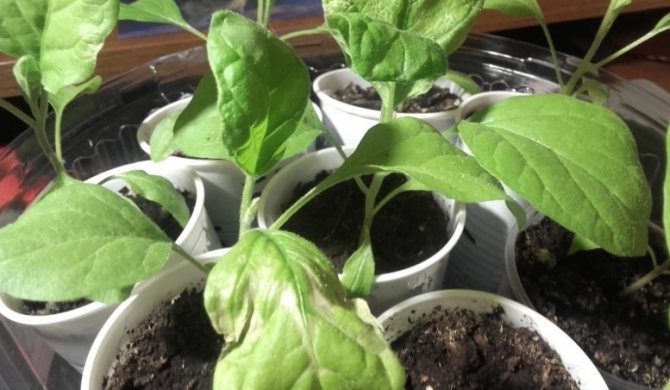

Eggplant transplant
Landing scheme
Each gardener may have his own scheme, but the recommended distance between the rows is 60-65 cm, between the bushes themselves - 35-40 cm. It is better to plant grown eggplants in a checkerboard pattern so that they do not shade each other.
Planting seedlings in the garden
The optimal row spacing is 0.5 m, and the distance between the holes is 30 cm.
- First you need to make sure that there is 20-degree water (1 liter) in the hole.
- Only after that a plant with an earthen lump is placed in the hole.
- Experienced gardeners recommend mulching the soil sprinkled at the trunk. It is better to use peat, sand as mulch. You can get by with sawdust 3 years ago.
Important: recently planted seedlings are not friendly with direct sunlight, therefore, at first, young plants are provided with shade. Lightweight fabric, non-woven fabric, plywood are suitable for this purpose. After five days, the seedlings will be ready for sunbathing.
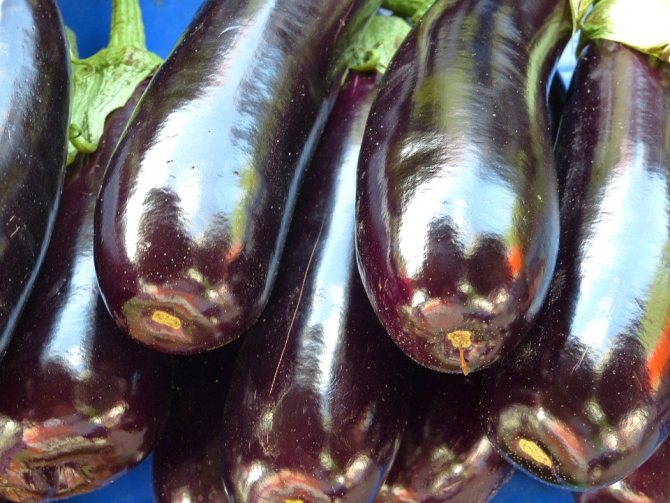

Eggplant: growing and care in the open field
Asparagus - outdoor cultivation and care
What to do when the seedlings are already in the beds and how to achieve a good harvest? First of all, we must not forget about the land in which the culture grows. Open field eggplant care is not only about loosening and fertilizing the soil. During the season, you need to do 3 or 4 fertilizing with phosphorus and organic fertilizers. You can use rotted manure at the rate of 3-4 kg per square meter.
Important! As the eggplants grow, they need to be hilled to prevent weeds from breaking through.
It is necessary to water the eggplants 1-2 times a week with settled heated water, and in hot weather - daily. After the seedlings have grown to about 30 centimeters, the top of the bush must be removed. Of the side shoots, you need to leave the strongest, and remove the rest.
Examples of groundbaits
- For ten liters of water, 30 grams of superphosphate and 30 grams of potassium nitrate are taken. Everything mixes well and is brought to a volume of 50 liters. A certain dose of fertilizer must be applied under one bush - from 700 to 900 milliliters of solution.
- Take 1 liter of mullein infusion, mix with 0.5 liters of pre-steamed nettle leaves, diluted wood ash and ten liters of settled water are also added here. The solution is placed in a dark place for 5-6 days. It is advisable to strain it before watering.
Important! It is imperative to carry out pinching - removal of excess shoots from plants. It is made for a quality harvest. Do not forget that eggplant loves space.
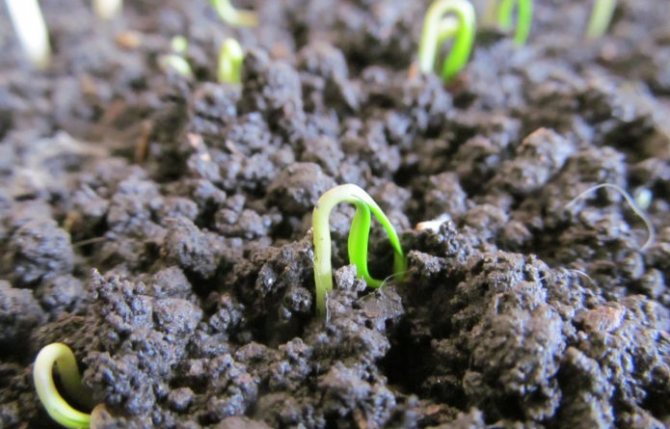

Growing eggplants
Bush formation. Scheme
The correct bush should consist of 2-3 strong shoots, which must be tied up so that the sun hits the flowers. If you start forming at a young age, you can leave 3 shoots. If you start this business later, then the number of leading shoots should be reduced. This is necessary so that the plant does not expend energy on its development, but forms fruits.
Seed and soil preparation
Before planting seeds, they are immersed in water for 5 minutes. Grains that have settled to the bottom are considered viable. They are disinfected in a 1% solution of potassium permanganate for 20 minutes. Germination can be stimulated by soaking in aloe juice for a day or in a hot hydrogen peroxide solution for 10 minutes.
Soil preparation begins in the fall:
- remove weeds;
- clean the surface of the beds from the stems;
- spilled twice with clean water;
- carry out disinfection.
In a small area, they use preparations containing beneficial microorganisms:
- Baikal - EM-1 and EM-5;
- Baktofit;
- Phytocide M;
- Planzir;
- Alirin B;
- Fitosporin.
The solution or biofungicide is used 2 to 3 weeks before frost. In spring, the procedure is repeated with the onset of heat. Chemicals are used as a last resort. Choose 3 - 4 hazard class. In autumn, a 3% solution of Bordeaux liquid is used. In April, the top layer is treated with copper oxychloride or Oxyhom.
Best predecessors for eggplant:
- peas;
- beans;
- cucumber;
- onion;
- carrot;
- cabbage.
It is allowed to plant after carrots and garlic. You can not use beds after nightshade. Crop rotation should be observed: the optimal interval between plantings in the same land is 3-4 seasons.
The culture requires light and fertile soil, it is mixed with:
- turf;
- sawdust;
- peat;
- humus;
- ash.
Annual disinfection of the earth leads to the elimination of fungal diseases. The main thing is to follow the recommendations and not skip the procedures.
Disease prevention
It is important to treat the plant and soil with fungicidal preparations to avoid the appearance of fungus. The main causes of problems with growing eggplants are bacterial as well as viral diseases:
- mosaics (cucumber, tobacco, ordinary);
- stolbur;
- spotting;
- necrosis;
- rot (white and gray);
- blackleg;
- late blight.
This is a list of the main eggplant diseases that appear as a result of violations of agricultural practices. Preventive actions will help make plant maintenance easier. It all starts with preparing the seeds for sowing (hardening is described above). Immediately before sowing, the material must be pickled. To do this, he is immersed in a solution of potassium permanganate (pale color) for 20-25 minutes. Additionally, mail should be processed (heating in the oven and treatment with drugs).
Pests and the fight against them
When growing blue ones, it is worth taking into account the fact that the plant attracts many insects, including pests.
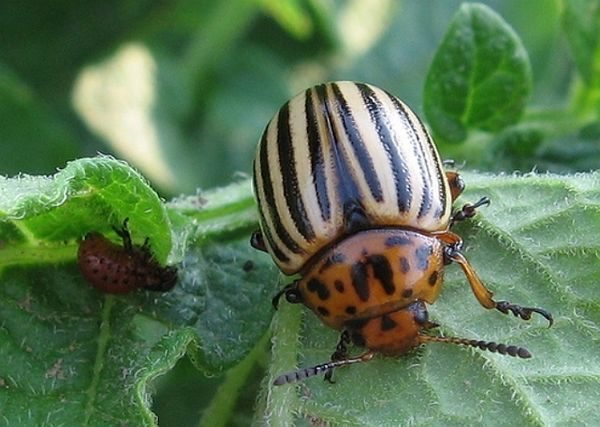

Colorado potato beetle - the most dangerous pest of eggplant
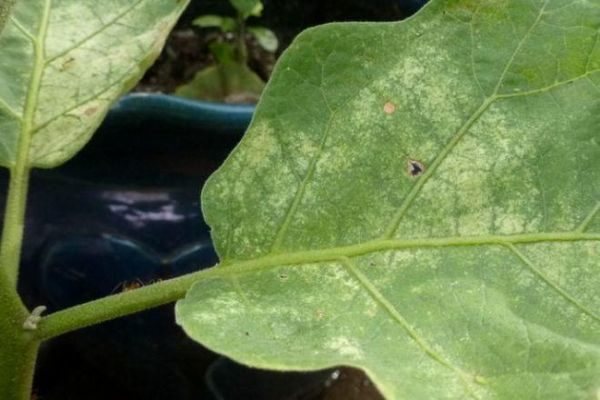

Spider mite
The most dangerous is considered Colorado beetle... When settling in the garden, after a few days, you can notice abundant bald spots, the gluttonous parasite literally gnaws at the shoots.
Treatment with the use of special chemicals or dusting with salt flour, wood ash, spraying with an infusion of wormwood will help to overcome the beetle.
Harmful crops can also be bugs and spider mites... For prevention, the beds are sprayed with infusions of onions or dandelions (with the addition of laundry soap). With the massive colonization of parasites, the following agents are used: Prestige, Zircon, Fitosporin, etc.
Experienced gardening tips
Several recommendations for gardeners on how to grow eggplants. It is most preferable to plant young eggplants in cloudy weather or in the late afternoon.The planting time that suits best is the beginning of bud formation, the approximate age is two months.
Before planting, the seedlings are watered and freed from the containers where they germinated. The dimples are poured abundantly with warm water and the plant is carefully lowered into them. It is necessary to cover the remaining space with earth and compact with your hands. Then water again and top with a layer of peat or soil. It is not necessary to deeply deepen the plants, only up to a couple of the first leaves. The beds need to be protected from the sun for several days, creating a light shade so that the plants can more easily withstand the stress of replanting.
Eggplant growing schemes for drip irrigation are also slightly different. 1 drip tape is used if the beds are narrow, 2 drip tapes are placed on the sides of the middle row.
On a note! It is believed that for open ground, the optimal landing in two rows. Between plants - 50 cm, row spacing - 90-100 cm.
That's all you need to know about how to properly grow eggplants to get a big and tasty harvest.
We plant seedlings
Fundamental rules:
- The distance between the "blue" bushes is about 40-50 centimeters.
- Before planting, the soil should be well spilled with water.
- Place the seedling in such a way that it can be covered with earth to the top leaves. Such a deep planting promotes the growth of additional roots and, in fact, replaces the popular hilling.
- Fill the hole halfway with earth and water it again. Pour dry earth into the hole, which will act as mulch.
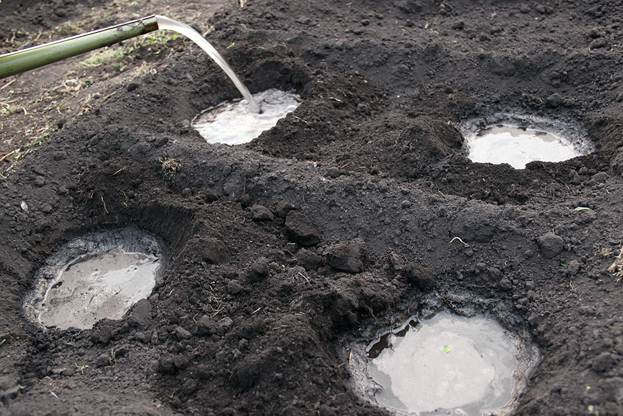

Just in case, the first days after planting, it is better to cover the planting with foil until the plants get used to the open air. After such a planting (with a layer of mulch), you can only monitor for several days so that on a clear day, under the film, the seedlings do not overheat.

